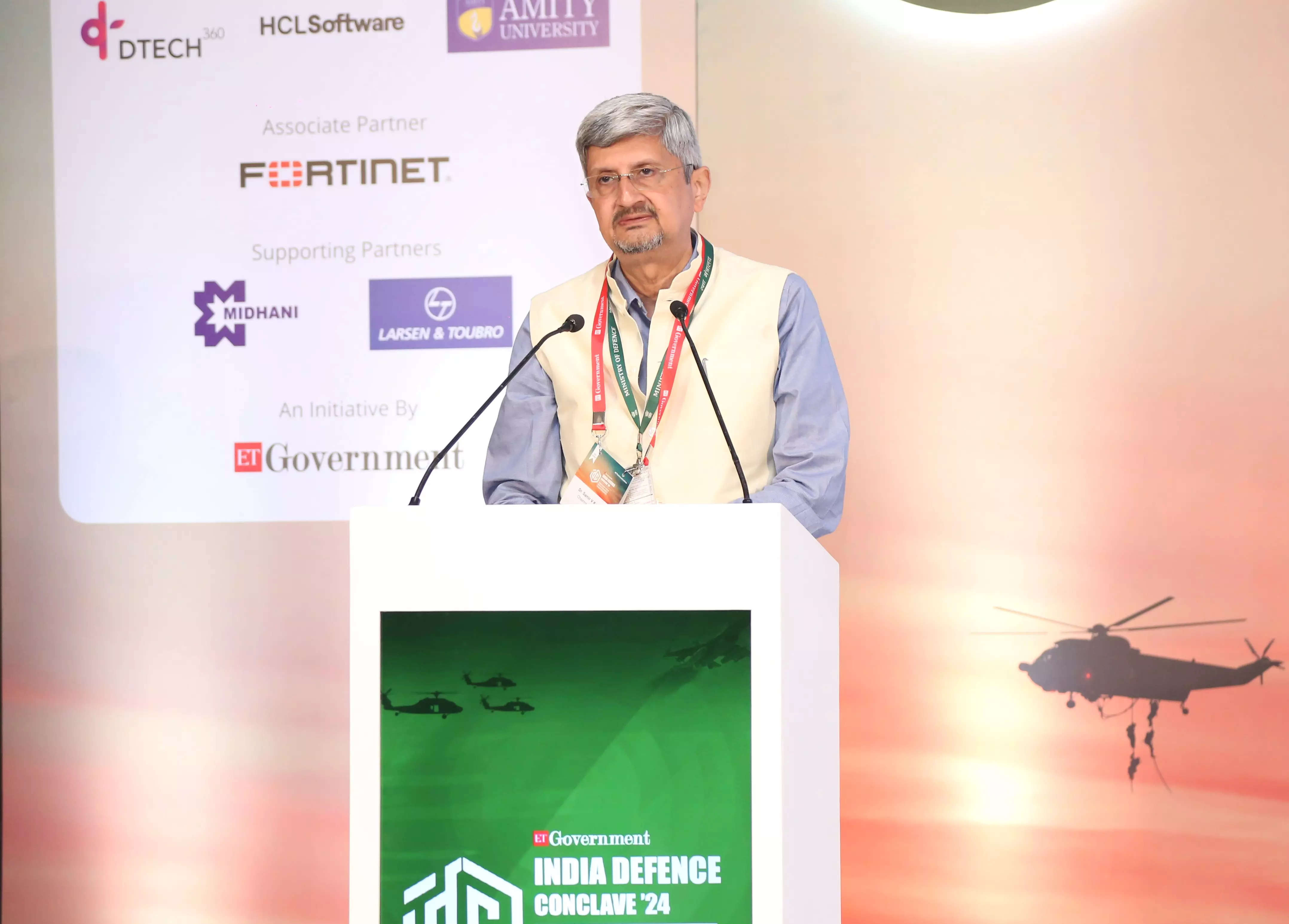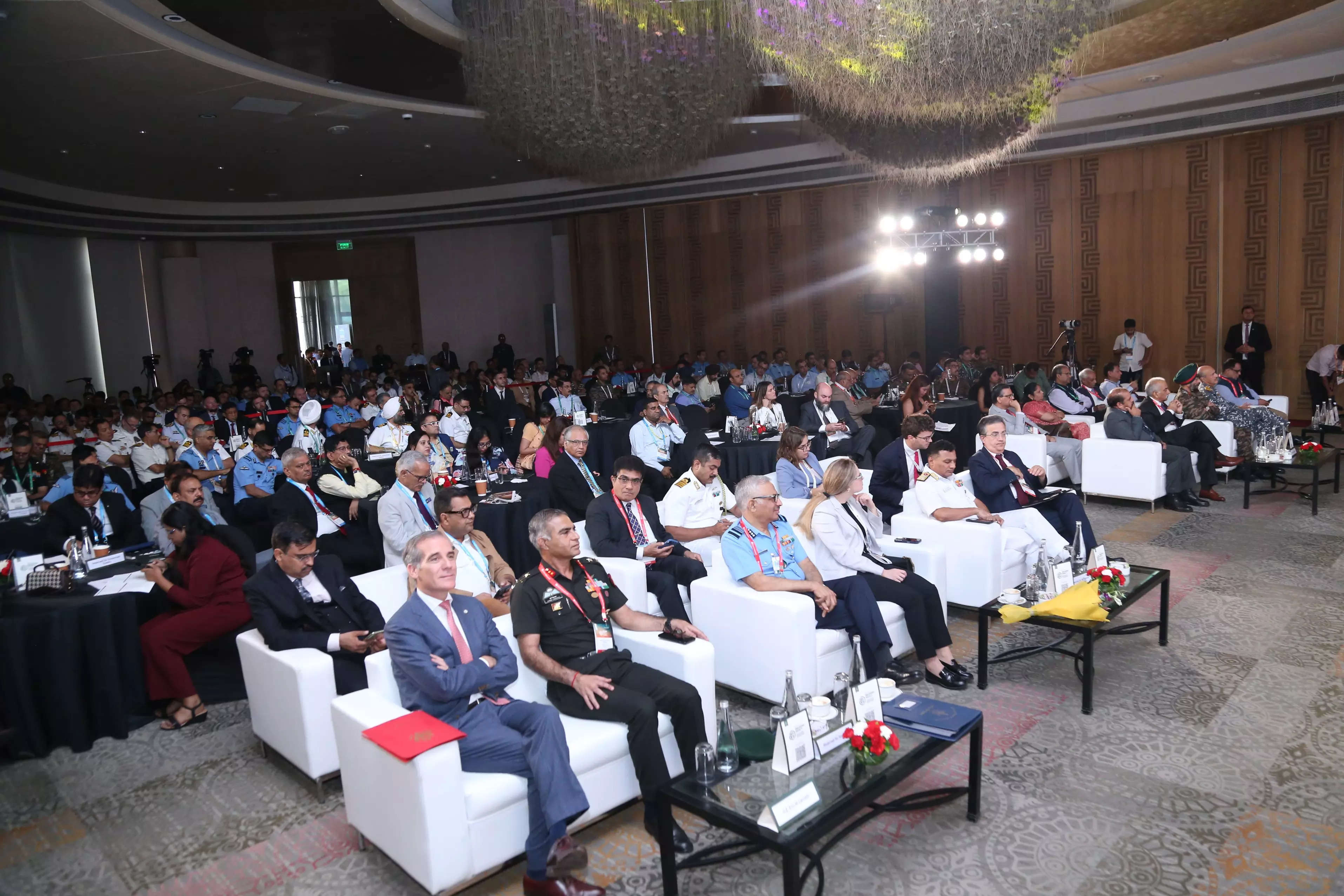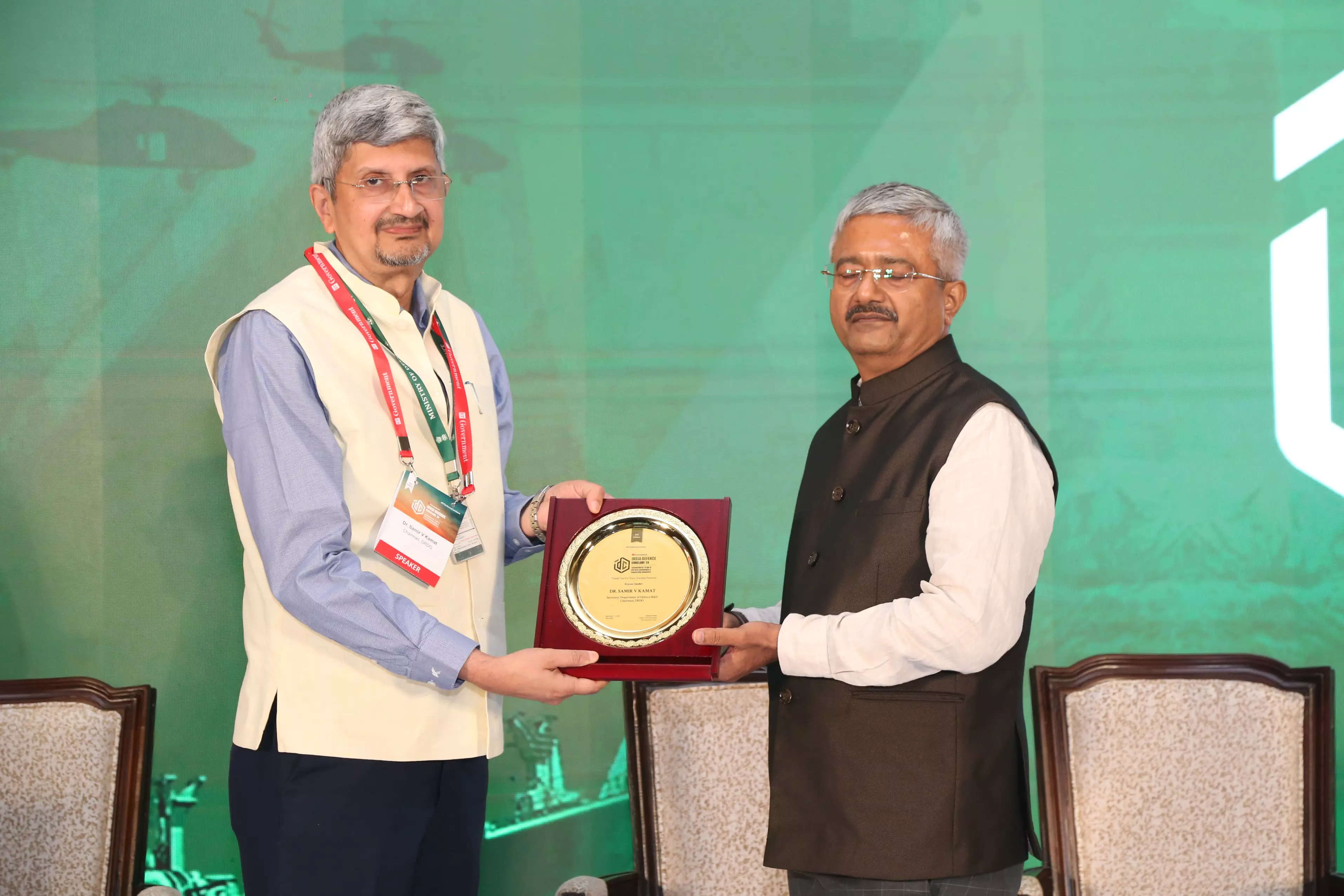
The India Defence Conclave ‘24, on September 13, was thrilling at the least, with highly informative and insightful keynote addresses, presentations and panel discussions on the policies and institutions that India is developing to become Atmanirbhar or self-reliant in the areas of defence research and manufacturing. Attended by over 300 guests from the three services (Army, Navy and Air Force), DRDO and other Departments in the Ministry of Defence and other Ministries, universities, think tanks and the public and private sector companies, the Conclave proved to be a fountainhead of insights on roadmap for achieving the vision of Atmanirbhar Bharat in defence sector.
The Conclave’s theme of “Atmanirbharta in the age of emerging technologies & transforming geopolitics,” was directly and succinctly addressed by Dr. Samir V Kamat, Secretary, Department of Defence R&D and Chairman, DRDO.
Dr. Kamat began his address by stating that “from a unipolar world we are moving towards a multipolar world. Based on the population and the growing economy of our country, it is clear that India will play a major role in the days to come.”
“The Prime Minister has laid out a clear vision. He wants the nation to become developed by 2047. He also wants the nation to be Atmanirbhar, especially in defence, and become a technology leader and a provider of solutions and systems for the world,” he said.
He reminded the audience at the India Defence Conclave that the nature of warfare is changing dramatically. “The domains have now expanded from the traditional land, sea and air to now include cyber, space as well as information.”
He took note of the new emerging technologies that have emerged in the recent years and are having a disproportionate impact on the strategies and weapons of warfare.

“AI, quantum, hypersonic science, advanced manufacturing, advanced materials—these technologies are playing a very disruptive role. These technologies will decide how future wars will be fought and who wins future wars. To meet such challenges, we have to address how we are doing our R&D now and how we will do our R&D in the days to come,” the Chairman of DRDO said.
“At DRDO, we are aware of these challenges and we have already started the reform process to see how we can leverage the resources of the nation and deliver on the vision of Atmanirbhar Bharat,” he added. He then went on to shed light on the initiatives that the DRDO is taking to facilitate the development of cutting edge defence technologies in the country.
“To leverage the expertise that is already available with the civilian sector in the R&D domain, we have formed 15 Centres of Excellence (CoEs) in 15 prominent academic institutions. These are not the usual CoEs; rather, these are DRDO-industry-academia CoEs which follow a hub and spoke model. In every CoE, we have identified the areas of focus after taking into the account the expertise of the Centre,” he said.
Providing an insight into the high expectations that the government has from the DRDO CoEs, Kamat said, “We expect these CoEs to eventually grow into the MITs and Stanfords of the world and create an ecosystem of innovation around them. We have recently come up with a policy to enable startups to engage with these CoEs and deliver the desired results. This is one initiative that we have taken to energize the ecosystem of defence R&D.”
“Another major initiative that we have taken is to open five young scientist laboratories within the DRDO. The director and all scientists working in the laboratory are below the age of 35, and they are working in the area of disruptive technologies. We hope that all these young scientist laboratories will act as startups within the DRDO ecosystem, and deliver innovative solutions to our armed forces, giving them the element of surprise when they take on their enemies.”
“The Technology Development Fund is a major initiative of DRDO to fund the industry, especially the MSMEs, for promoting indigenization of the existing products, systems and subsystems, and also carry out the development of new technologies,” he said. He informed the audience at the India Defence Conclave ‘24 that the Defence Minister had granted the permission to increase the funding from Rs. 10 crore to Rs. 50 crore per project.
Dwelling briefly on the recommendations of the Kakodkar-Saraswat Committee, the DRDO Chairman said, “Based on the recommendations of the Kakodkar-Saraswat Committee, we have now introduced a policy to facilitate the use of a portion of these funds for cutting edge projects, like what DARPA funds in the USA. These cutting edge projects are typically those where the risk of failure is very high.”
He explained that such a route for funding research into cutting edge defence technologies was important because “we had a lacunae in the system. No one came forward to fund high risk projects, because our audit system wanted all projects to be successful. This sort of lacunae resulted in only the incremental R&D being funded.”
“With this scheme we hope we will be able to jumpstart the research into cutting edge technologies that India’s defence sector needs. We are also looking at how to improve the skills of the youth in the country. We are working with academia to start defence technology programmes at masters level. We are also looking at the ITIs and allowing them to work in our laboratories to improve the skills of their students,” Kamat said.
While maintaining that he was quite sanguine that in the next 5 to 10 years, the extent of the defence R&D ecosystem in the country would be much grander than what it was today, he also sounded a word of caution. “Today we spend 0.68% of our GDP on R&D and primarily it is the government that does the spending. If we have to become a technology and world leader, this R&D spend has to increase and the private sector must become a major player,” he said.
He pointed out that most developed countries are spending between 2% to 3% of their GDP on R&D. “I request my industry friends, who are here today, that they should not look only at the government for R&D spending. Please look at how you can take initiatives for R&D projects. Please look at how you can increase the R&D spend.” He emphasized that with the Government’s focus on Atmanirbharta and procurement policies, the opportunities for the industry were quite large. “With the kind of interest that we are getting from foreign countries, I can say that exports will prove to be a major market for our industry,” he said.
In the final minutes of his address, Dr. Kamat took note of the fact that it is the civilian space that is excelling in disruptive technologies like AI, quantum, and 5G and 6G communications. “This was not always the case,” he noted. “Historically, it is the military that used to lead and those technologies later used to diffuse in the civilian sector,” he pointed out.
“If you intend to become a leader in defence research and manufacturing, then you have to utilize the technological and manufacturing expertise of the civilian sector. At DRDO we are trying to work with the industries. In our mission mode projects we work closely with private industries from the early stage,” Kamat said.
He concluded his address by noting the future was bright for defence R&D and defence manufacturing in the country. “By working together we can achieve the vision of Viksit Bharat and ensure that the country is Atmanirbhar in defence research and manufacturing,” he said.



